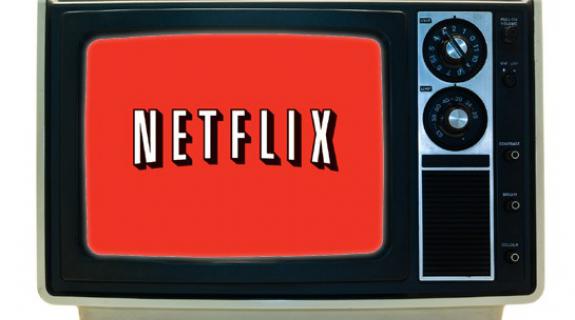How do you solve a problem like “the n word?” And we’re not talking about that particularly heinous racial epithet.
We’re talking about Netflix, the omnipresent streaming service that was Topic A at Variety’s discussion Monday on “The State of Next Generation Television” at their annual Entertainment and Technology Summit. And yes, that’s actually how the suits in the room referred to the company. The consensus: 2013 is the year of resetting the relationship between the broadcasters, networks, studios, and the guys in red.
“I think they are the true definition of frenemy,” said Chuck Saftler, president of program strategy and COO at FX Networks.
The main challenge, according to Syfy President of Original Content Mark Stern is that while Netflix can be a useful vehicle for discovery and catching viewers up ahead of a season, the more the streaming service succeeds, the more it endangers the traditional MVPD model of doing business.
“It’s not television,” Stern said. “It looks exactly like television, it’s winning Emmys and all the rest of it, but it’s actually parasitic to our business.”
Networks are going to have to recognize that Netflix is an entirely different animal and step up their game to reach their audiences in a similar way and monetize those efforts in order to compete. And while Netflix has been great for shows like “Breaking Bad” and “The Walking Dead” where audiences were slow to get into them and then binge-watched to catch up, networks are becoming increasingly frustrated with their inability to maximize in-season binge watching.
Core Media Group President Marc Graboff said that the windowing strategy battleground is shaping up to be particularly big and nasty.
“I think the networks and the MVPDs are fairly saying ‘wait: if people want to binge view during this current season, we want it to be on one of our platforms. And then if you want to catch up with ‘Breaking Bad’ three seasons in or two seasons in, go right ahead to Netflix, because that’s our second window’.”
Windowing and stacking in-season programming with only five or so episodes available on-demand via MVPDs during the current season has proven contentious. With networks putting up the programming and marketing dollars for a series and making that investment on the front end, they should be able to adapt as times change and viewers expect a more non-linear experience by offering more episodes, Saftler argued.
“To only having a rolling five [episodes] and someone hears that ‘The Americans’ is a great show and we’re on episode 11 and they can’t go back to watch the beginning of that series in our platform, that doesn’t make any sense” Saftler told the audience. “That doesn’t mean that there isn’t a really valuable window for Netflix, as we’re going into season 2; we just want to own the in-season experience.”
But solving the windowing issue won’t solve the “n word” issue for the networks. Once those shows make it onto Netflix, there’s no way for viewers to know on which channel they initially aired. Even as Netflix pours more marketing cash into promoting its own originals series like “House of Cards” and “Orange is the New Black"—which are all labeled prominently as “A Netflix Original Series"—library fare from the networks is stripped bare.
“It starts to lump our brand in as part of their brand,” Saftler said. “And we’re not necessarily going to get the residual benefit down the road, I’m concerned.”
Lionsgate TV Group topper Kevin Beggs, who has programs on broadcast, cable, and Netflix, noted that the fact that all of these issues are in flux is contributing to the complexity of doing deals with over-the-top services.
“The Netflix deal took us over a year to figure out and negotiate. The Hulu deal took nine months. Amazon is still going in terms of trying to figure out models,” Beggs said. “And that’s very different from the two phone calls we try to make to our partners at Syfy and USA and anywhere else we work in which we have templates and there’s 40 years of history behind them to make some of those deals.”
Increasingly, it seems, networks are going to have to invest in their own platforms if they want to finally deal with “the n word.” The success of Netflix, Hulu and Amazon, combined with research that shows a majority of Millennials consume content on devices other than a television set, means that networks have to adapt to a world where sometimes viewers want to lean back and watch live, and sometimes they want to lean in and dictate their own viewing schedule. That’s one of the reasons why Saftler said FX is launching their own streaming app FXNow in December. The app, which will require authentication from a cable provider, will stock a range of 21st Century Fox content, including Films and shows from FXX and FXM.
“You’ve got to be linear and non-linear, and both have value,” FX’s Saftler told the audience. “But to be one and not the other you’re going to die in the future.”
Brief Take: By diluting network branding and handcuffing their ability to adapt to changing viewer behavior, Netflix is no longer simply a vehicle to promote series discovery and binge-watching—it’s a direct threat to networks’ bottom line.
Tags:












































__twocolumncontent.jpg)











